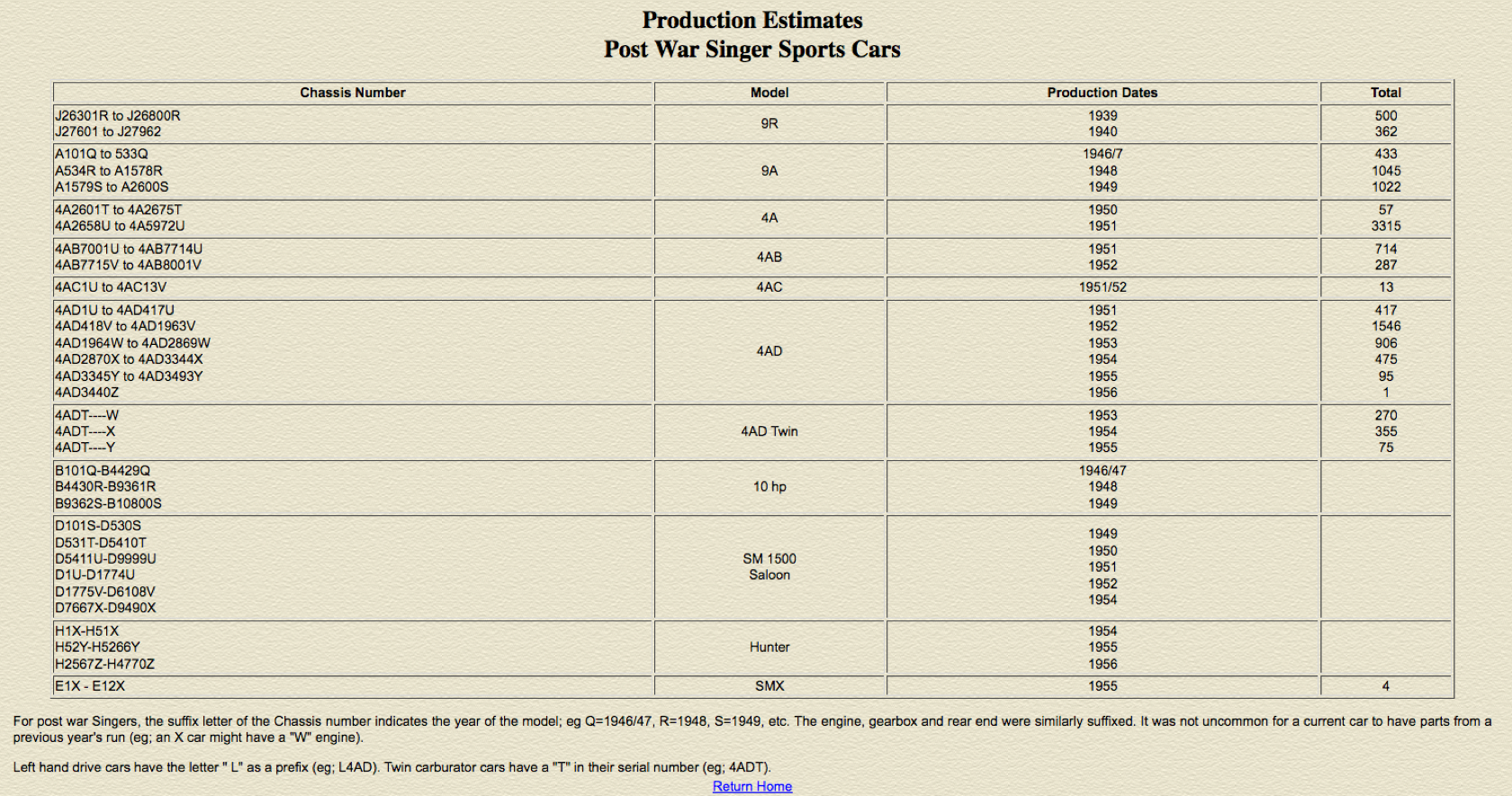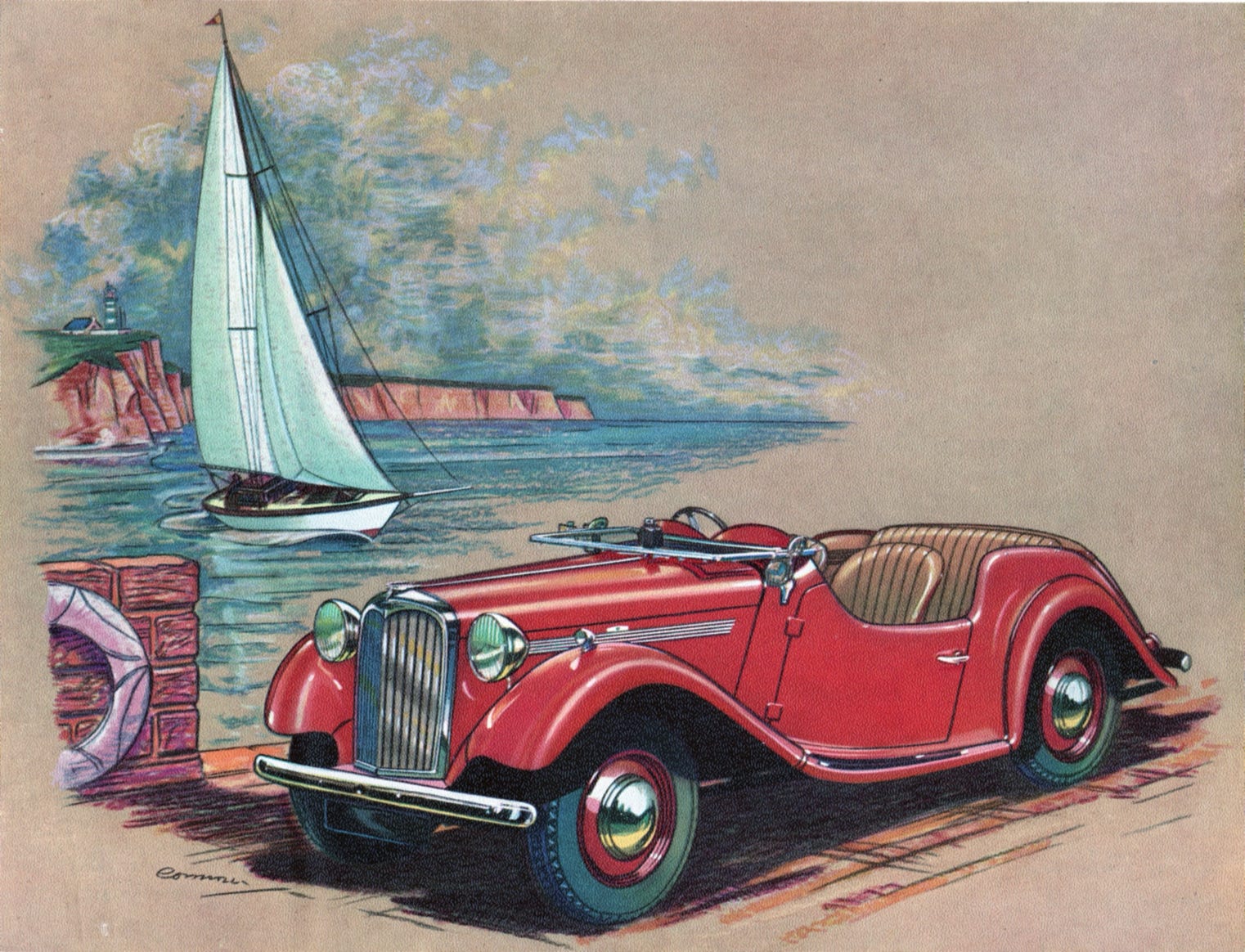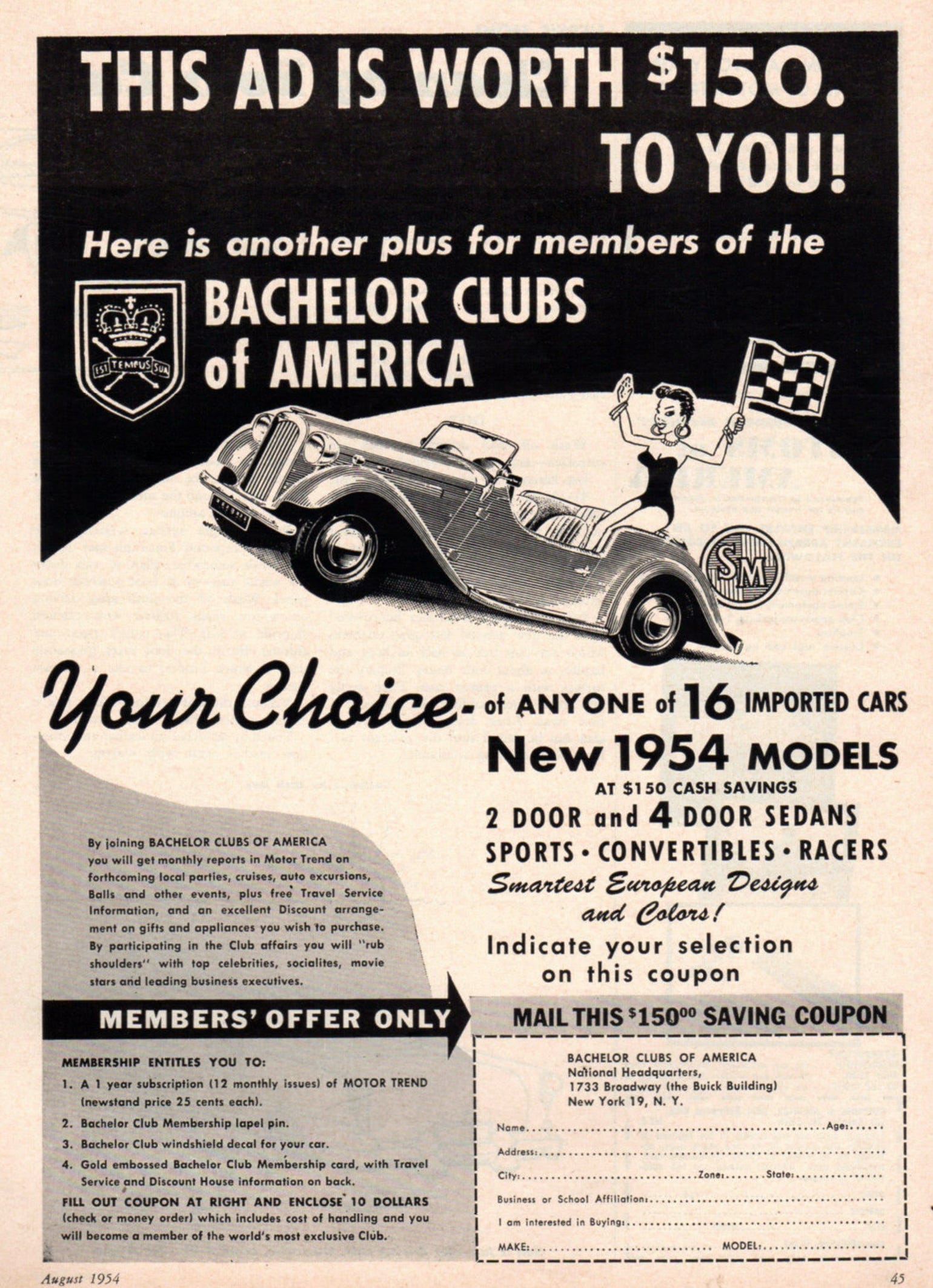Singer History
1874 - George Singer began making bicycles.
1901 - The Singer cycle firm acquired the manufacturing rights of the Perks and Birch motor wheel and made front-wheel drive tricycles as well as motor bicycles.
1905 - Singer & Co. Ltd. Coventry starts making light cars first in Warwickshire 1905-1936. It was a 15hp 3-cylinder machine designed by Alex Craig and had horizontal cylinders with overhead camshafts and 30” connecting rods with the final drive by chain.
1908 - Singers were racing at Brooklands.
1913 - Singer using single overhead camshaft engine with inclined valves.
1927 - Opened the Birmingham works
1928 - Singer had the lowest price SOHC engine with the Singer 8 and ranked third behind Morris and Austin.
1932 - Started making left-hand drive models for export.
1933 - During the mid and late Thirties, the firm gave MG some serious competition when it came to trials, racing and sales of production sports cars. As early as 1932 Singer cars were available with left-hand drive for export, but it is not known how many, if any, were imported into the United States prior to World War II.
1934 - First independent front suspension and a fluid drive that allowed clutchless gear shifting.
1939 - Singer “R” launched.
1946 - Resumed production of sedan models after the WWII. Prior to 1950, American distribution was handled by Fergus Motors in New York, which may have imported Singer Ten sedans along with the SM-9 Roadster.
1951-52 - SM9 discontinued in favor of the 4A model.
1954 - Rootes Motors of England bought the Singer Motor Co.
1955 - SM 1500 Roadster 4AD dropped in favor of the Hunter.
1956 - 4AD engine dropped. Fiberglas SMX Roadster were in the works but all models were absorbed into Rootes. Moved production to Rylon-on-Dunsmore, Warwickshire until 1970.
1967 - Rootes sold out to Chrysler of England.
(See (NN Sep/Oct 1992) for full history. Singer Motors of Coventry built about 6,000 roadsters between 1936 and 1954. In 1954 Rootes Motors of England bought them out. First sold in USA by Vaughn Motors in Los Angles, then became Rootes on Pico Blvd. in LA. Rootes sold out to Chrysler of England in about 1967 who then trashed most of the remaining parts. (NN May/Jun 95)
SINGER SM-9 ROADSTER
(See NN May/Jun 92 - Two articles where serial numbers are decoded and British prices for SM9s as of 1992).
Another great article by Bill Haverly in (NN Jan/Feb 92).
The Singer SM-9 was based on the prewar Singer Nine Roadster and was powered by an overhead-cam 1074cc engine producing 37 bhp.
The ladder frame was fitted with live axles and leaf springs front and rear. The small four-seat body had individual front bucket seats, a
fold-down windshield and proudly featured a vertically slatted chromed radiator grille and front and rear bumpers.
Early models used a three-speed transmission, but in 1950 a four-speed unit was made standard and the model designation became SM-9 4A. That same year interior trim was changed to vinyl, with the previously standard leather becoming optional. Before being discontinued in 1952, final examples of the 4A and more deluxe 4B were fitted with the coil spring independent front suspension from the SM 1500. The performance of all SM-9 models, especially when carrying four adults, was very modest, but at the same time few small cars offered open air seating for more than two passengers. In 1949 the price had been a somewhat high $2,195, dropping to a more
reasonable $1,495 in 1950.
In 1950 distribution shifted to Vaughn Motors in New York and Vaughn-Singer Motors in Hollywood. For 1950, Singer also started exporting its new SM 1500 four-door sedan. Although this model never attracted much of a following in the States, it provided the independent front suspension and four-speed transmission to update the Nine and the engine that was later used in the SM 1500
Roadster of 1951.
SM 1500 ROADSTER
(See NN Mar/Apr 92 for road test from Motor World).
The SM 1500 used the same basic body as the Nine, but had a slightly revised grille and a modified taillight arrangement. In size and performance, the Singer 1500 was very close to the contemporary MGTD. The 1497cc engine was 20 percent larger than that of the l,250cc MG and used a single overhead camshaft to open and close the valves. In standard home market tune a single Solex carburetor was used to generate 50 bhp, but the vast majority of cars imported into this country were "export" models and did their breathing through twin Solex carburetors. The still-modest 58 bhp reached the rear wheels via a four-speed transmission. Like the MG, the Singer also had an independent front suspension with a live axle suspended by leaf springs bringing up the rear. With a top speed of around 80 mph and prices at $2,200, the cars were clearly competitors. But there was a difference - the Singer was slightly less sporting and seated four, allowing the would-be sports car buyer to accommodate his family.
To boost sales, publicity photos were staged with Marilyn Monroe and Lucille Ball in new Singers, and importer William Vaughn gave away a new 1952 SM 1500 roadster at the International Motor Sports Show in New York. In 1954, the SM 1500 sedan received a minor face-lift, evolving into the Hunter series - one model even receiving the H.R.G. designed twin-cam version of the 1500 engine. Although production of the Nine Roadster lasted into 1952, at least a few were sold in the United States as 1953 models. The more popular, but very much outdated, SM 1500 Roadster lasted into 1955 before it was discontinued by the ailing company. Before it was dropped, a total of 3,450 of the larger-engined roadsters were built. Most of them were probably imported into the United States, although exact figures are unknown. By the time of the Rootes Group takeover in late 1955, production had dwindled to about 30 cars a week. Singer models for 1957 were little more than slightly reworked and rebadged models from other Rootes divisions.
• Singer frames are made of ash.
Production Numbers
• Chart showing model numbers and numbers in production from ASCO and Bill Haverly. (NN Jun/Aug 92).
• Singer 4AD Statistics
Serial No. location -- Right side of bulkhead under bonnet.
Engine No. location -- Right side of cylinder block flywheel housing
* Wheelbase 7ft 7in
* Track 3ft 10 3/4in
* Turning circle 33ft
* Ground clearance 6in
* Weight (dry) 15 1/2 cwt
* Tyre size 5.00-16
* Overall length 12ft 7 1/2in
* Overall width 4ft 10in
* Overall height(hood up) 4ft 10 1/2in
-------------------------------------------
Engine Data
* No. of cylinders: 4
* Bore X Stroke: mm 73 X 89.4
: in 2.874 X 3.52
* Capacity: cc 1497
: cu in 91.36
* RAC rated hp: 13-22
-----------------------
Single Carb Twin Carb
* Max bhp at rpm
48 at 4200 58 at 4600
* Max Torque (lb/ft) at rpm
72 at 2200 77 at 2600
* Compression ratio
7 : 1 7.47 : 1
-------------------------------------------
Nut tightening torque data
Bolt size lb/ft
* Cylinder head:
7/16in BSF 58-66
* Main bearings: 7/16in BSF 58-66
* Big ends 3/8in BSF 33-42
* Flywheel 3/8in BSF 33-42
* Crown wheel (Salisbury) 3/8in
UNF 40-50
• Rear hub oil seal measures 26mm I.D. x 54mm O.D.
------------------------------
• Parts Codes
in workshop manual:
ND refers to parts which were brought in from other suppliers and to which Singer gave a code but no drawings of their own.
For instance, FS.106.6 is a 3/8” BSF hexagon headed set screw 3/4” long. N.105.K is a 5/16” BSF nut in K grade material. W.105.K is a 5/16” washer SP 412 is a 5/16” washer. SP.412 is a 1/8” split pin 1 1/2” long
1st letter
F = BSF thread
W= BSW thread
blank = not applicable (eg; washer, t split pins, or assumed BSF)
2nd letter(s):
B=Bolt
S=Screw
ST=Stud
W=Washer
N=Nut
SP=Split Pin
CK = Countersunk screw
RH = Round Head screw
1st number in the 100's:
1 = standard eg; hexagon head
2 = hex lock nut
3 = hex castle nut
4 = hex slotted nut
2nd and 3rd numbers:
nominal size in 1/l6th of an inch eg; 106 = 3/8th /number: length of bolt in 1/8th of an inch eg: /8 = 1" long
blank = Not applicable eg: washers
Suffix letter: grade of material if significant
Note: for split pins:
1st number is the nominal diameter in 1/32nds of an inch; length as per normal, eg: SP.206 is a 1/16" dia split pin 3/4" long, SP.4I2 is a 1/8"dia. split pin l 1/2"long
Singers did not include BA fasteners in this code system, nor did it extend to specialist parts. Hopefully, everyone will know the difference between set screws and bolts, and watch out for mistakes in Singer's lists!
• Colours (colors):
Singer Nine Roadster, Series 4A: Maroon with upholstery in burgundy, black with signal red, signal red with signal red, grey with red and green with brown. (NN Mar/Apr 94)
• Article on Forty Finest featuring Singer 4A 9 Roadster (NN Mar/Apr 92).
Singer SM 1500 Roadster, Series 4AD (T)
See (NN Nov/Dec 1992) for great chart comparing cars contemporary with 50s Singers.
• List of literature held by the Singer Librarian in (NN Nov/Dec 1992) .
• (NN Mar/Apr ‘93) has a chart comparing the Singer I.F.S. Models 1934 to 1937 courtesy S.O.C.
Rubber Mounting Pads, Door Fit, Body Bolts
• (NN Mar/Apr ‘93) good drawing and article by Dave True on rubber packings or mounting pads where body meets frame.
Singer Camshafts 1932-35
• Article by John Horne courtesy ASCO in (NN Mar/Apr ‘93)
Gazelle Comparisons
• (NN Mar/Apr ‘93)
Gazelle Stats from I through VII (1956-1970) on pullout in (NN Sep/Oct 96)
Roller Bearing Comparisons
• Most Singer Models (NN Mar/Apr ‘93) courtesy SOC Australia.
NASOC Membership List in (NN Jul/Aug 92) and (NN Jan/Feb 96) (NN Jul/Aug 1996).
Ditzler Singer Paint Numbers (NN Jul/Aug 1996)
Re: Number of known cars in NA
Postby Peter McKercher » Mon Dec 05, 2016 6:04 pm
Pretty hard to say Scott.. Dave Green could probably go through the club records and tell you how many of each car there is on file, but the number of cars affiliated with the club is not representative of how many exist. For example, I ran a database of Canadian Singer Owners and there were about twenty that were not registered with NASOC. That’s quite a few when you consider that NASOC only has about 60 members with cars. However, I can tell you approximately how many we started out with.
The 1954 Atlas Manual publication entitled All the World's Cars stated that "over 1,400 Singers have found U.S. customers”. We know for certain that Vaughan imported 981 4 AD roadsters and prior to that he could have brought in approximately 300 4A roadsters. It’s also reasonable to assume that Fergus Motors brought in as many as 100 4A cars before Vaughan signed on as the exclusive North American distributor.
If these numbers are close, then we have to assume a survival rate, which is pretty hard to approximate because there are so many factors to consider, especially with antique cars. If I were to hazard a guess, based on known singers in North America, I would say the rate might be in the neighborhood of 7-8%, which takes us up to around 110 cars. That means there are still a handful out there that have not yet been discovered/restored.


